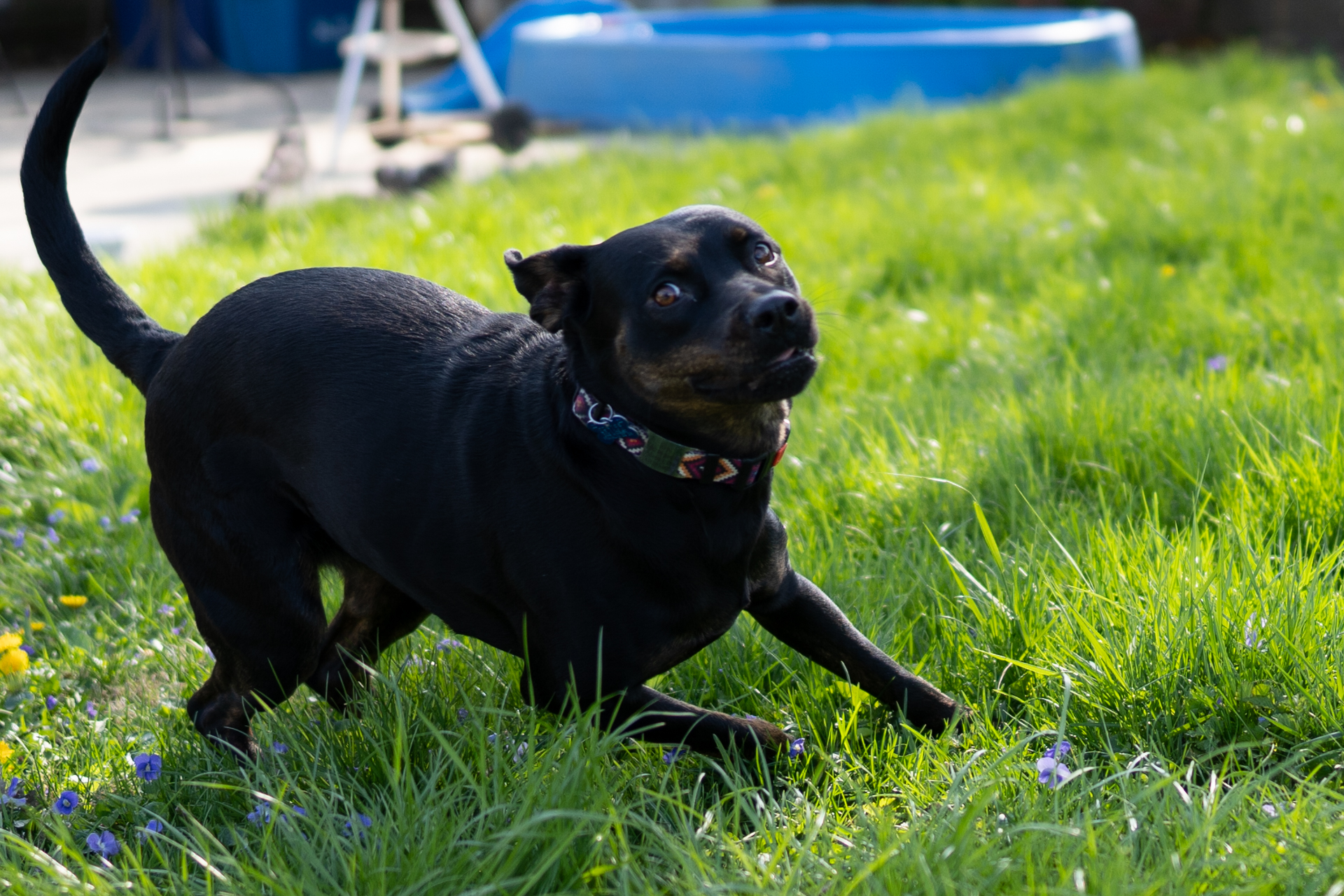- Victor’s Tacos
- Evo Wok
- Arby’s
- Subway
- Asahi
- Payne’s subs
- Mohio Pizza
- Amato’s Pizza
- J Gumbo’s, spicy?
- Rutherford Café
- Chelley Belly
- Yokai Ramen
- Mi Cerrito
- Typhoon
- Las Miches
- Hamburger Inn
- Wendy’s
- Ay Caramba? We haven’t been yet.
- Freddy’s (out of business, but we loved it)
Category Archives: All
All of the posts on this site.
Measure the Universe
All Units and Constants, Organized
I created this consolidated sheet to catch up with the Belgians. I remain impressed with the academics in Belgium even though I was only there for a couple months. Normally I try to post directly to the page for readability but this requires special formatting to make the units / superscripts / subscripts look good so I am posting in PDF:
Truly, this is the best consolidated “how-to” science document I know of. In 11 pages, it covers pretty much all science. The difficulty that prevents most people from succeeding in science is units. Step 1 for any successful science student is to consistently use the same unit for each type of measurement. If you are given inches, you convert to meters. If you are given miles, you convert to meters. If you are given light-years, you convert to meters. Even kilometers, convert to meters. You get the point. The unit helps understand the concept and the concept yields the unit if you are thinking of it correctly.
Heat Capacities of the Atmosphere and the Oceans
Volume
- Volume of the atmosphere: not really meaningful.
- Volume of Earth’s oceans: 1.335×1018 m3
Mass
- Mass of the atmosphere: 5.15×1018 Kg
- Mass of the oceans: ~1.4×1021 Kg
- Average salinity: 0.035 Kg salt per Kg water, so 3.5% by mass.
- The oceans are 272x the mass of the atmosphere.
Specific Heat
- Specific heat of “air” at 250K is 1005 J/KgK
- Specific heat of ocean water is ~4000 J/KgK
Total Heat Capacity
- Total heat capacity of the atmosphere: 5.2×1021 J/K
- Total heat capacity of the oceans: 5.6×1024 J/K
- The heat capacity of the oceans is ~1,077x the heat capacity of the atmosphere.
I think it’s interesting that the ocean is only 272x the mass of the atmosphere. That is knowable intuitively if you know the approximate pressure deep-sea subs deal with or know that 10m of water is equal to about 1 atmosphere of presure.
Another interesting scale to put in perspective is that the hydrosphere is about 0.023% of Earth’s total mass. So the Earth mass is about the mass of 4,300 oceans.
Curriculum for the 21st Century
Life basics
- Money
- personal finance: fundamental. Of course necessary.
- Basic accounting principles. Basic accounting principles are important because it is the language used to practically communicate the exchange of money in real life. If you understand everything except the accounting principles, good. It’s better than nothing. However, accounting principles empower an individual to track many automatic transfers of money that are too tedious to track day-to-day and month-to-month without accounting tools.
- Literacy. I believe all of the following should be included in the idea of modern-day literacy. The narrower definition of “literate” meaning “to be able to read” excludes the wider necessity of being able to successfully communicate in the real world.
- Reading, of course. Still fundamental.
- Writing. With electronic communication, ideas and all media can be infinitely copied. This trend of over a century has reduced the perceived value of a individual amateur content production to near zero. Being able to produce content of all kinds is valuable.
- Typing. Typing is realistically the dominant text communication method of our time. Certainly penmanship still matters, but it has been practically replaced and it is probably more important to be able to type than write.
- Blogging. I have written about blogging extensively. In fact, I have blogged about blogging extensively.
- Video Editing. This seems advanced and to do it properly currently requires a paid software subscription (free video editing software stinks). Learning to video-edit is absolutely worth it to better understand the deluge of video content we are all exposed to. Participating in video editing will certainly ruin the enjoyment of some content – especially most of Netflix – but learning video editing develops an appreciation for other content and a more actively fulfilling experience.
- ***On screens*** I am about as anti-television / smartphone / social media as a person can be. However, I am not completely anti-screen. Screens are a reality. Screens are objectively better than paper in many ways. Screens display all types of content. Television is a passive one-way conversation that conditions the viewer to not think. Screens can be – and often are – two-way and allow user production even more than paper! Screens should not be demonized for the fact that the majority of content on screens is negative. Producing content on screens can be meaningful and fulfilling. There is a lot of great content on screens and we should be learning to find and make the good content rather than avoiding content altogether by avoiding screens.
History, Math, Science
Learn context to understand why different concepts are important, what they are.
- History Etc.
- Geography, countries, yes, but also non-country-centric. Geographic feature-centric first.
- Geography > political boundaries > history: geography gives context for political boundaries. Together geography and political boundaries give context for history. History gives context for many of the concepts in other subjects. Understand how humans came to learn the world.
- Understand the calendar. Remember dates not relative periods of time. (Like Rick Reeder)
- Family History
- Local history
- World history / human history
- History of the funding of science, art, and schools. Learn the fundamental support system for the environment that enables students to learn. Learn that higher learning and the production of art is a uniquely human endeavor that is fundamentally collective.
- Math
- Roman numerals for basic counting.
- Place value, zero, Arabic numerals.
- Number systems, base 10, hexadecimal and binary for other examples etc.
- Fractions, factoring, least common multiple
- Algebra
- Trigonometry is more than just triangles, it’s the building block to calculating all shapes.
- Calculus: derivatives, integrals, position, velocity, acceleration.
- Infinite series, frequency domain, e^(i*pi) +1 = 0. (This seems crazy but the concepts are simple if they are taught in normal life not complex math class).
- Science, particularly physics.
- The scientific process, reduction.
- Energy.
- Thermodynamics basic concepts.
- Relativity
- Navier-Stokes equations
All units in one place for reference, especially for understanding concepts, simplify with a unified system of units (SI system).
Religion and Philosophy
- Bible
- Sand Talk
- Antifragile, tipping point, etc.
Sports and Art
- Literature, Art, Music, Sports: learn to enjoy them the way they are. Art is inherently valuable. In a world where technology advancement obsoletes jobs and entire careers within a generation, being able to produce valuable art is something inherently outside the scope of what machines can do and replace. ***Be sure not to fall into the trap of imagining that one has to make money for art production to be valuable.*** If a person can enjoy producing his own art, he is filling a void “normally” filled by the output of entire entertainment industries. The fact that it is difficult to make money producing art is partly what makes producing art so valuable. It is also very difficult to buy truly meaningful art. Producing one’s own art is an inherently non-taxable transaction. Governments will never really promote individuals’ production of their own content. Producing art could single-handedly do more to reduce energy consumption than any fancy modern technology possibly could. Yet art does not support governments so art is never really the solution according to governments. Producing one’s own art is the most efficient expenditure of human energy. Producing art is inherently fulfilling. Art is fulfillment and independence during times of plenty.
- Absolute pitch training. I think when you and he are screaming together, he is matching your pitch. You said this. I think you are right. I think it’s good for him.
- Ball. Play ball.
- Painting? I know little about painting, but when we think of art, painting is the first thing that typically comes to mind.
- Sailing: a classic means of transportation.
- Knots:
- “Make a loop in the end of a rope.” Bowline
- “Tie to that object for a heavy load.” round turn and two half hitches
- “Tie to that object quickly for a light load.” clove hitch
- “Tie a fat knot in that rope.” figure-8
- “Attach these two ropes together.” Square knot / man’s knot
- “In an emergency, attach those two ropes together.” rolling hitch / double-clove hitch
- “Tie down that gear on that trailer.” Delaware Rental knot
- Aaron’s “double-figure-8”
- “Tie to that cleat.” Cleat Hitch
- “Tie these two ropes of different sizes together.” Sheet Bend
Diet
We should all understand the basics of food: fat, protein, carbs.
And we should understand how our metabolism: ketones and insulin.
Test Taking and Chess
When I took tests in high school and college, the general format was, “Complete this test content as correctly as you can. It should take about 2 hours. You have 2.5 hours to complete it. Go.”
When I took the GMAT in 2020, there was a stark difference. The GMAT format is more like, “You will complete content as correctly as you can for 2 hours and your score is based on how well you complete the content and how difficult the content was that you completed in 2 hours.” This format is called an “adaptive test.” Computers enable adaptive testing where the difficulty of the questions is based on your performance on previous questions. Even top test-takers use all the time allotted because their content is more difficult than those who get lower scores. I go into detail on my GMAT prep post here.
Timed chess is a similar challenge where your brain has to operate correctly and efficiently.
I believe these types of mental challenges highlight mental fitness well and understanding how to get one’s brain to work well for a specific period of time is a specific life skill. If I have to complete a 2-hour task and I have 2.5 hours, I can make up for fatigue or hunger with the extra half-hour. If the goal is to output as much correct information as possible in 2 hours, I will absolutely do better on a day where I am well-rested and ate well.
Modern standardized tests are mental challenges like timed chess and I think important life skills.
Ohio’s Eclipse
Eclipse Chasing
Now that this eclipse is behind us, we are thankful that we didn’t end up like Guillaume Le Gentil, and we are naturally looking to the next eclipses. The next American eclipse is in 2045.
Ohio’s Schools are preparing for the eclipse.
Coding Projects
- Astronomical Clock
- AstroWideImageMapper
- Tag audio files / sheet music images to relate the audio to the location on the sheet music. Kinda like a Karaoke lyrics read-out but advanced and customizable for musicians / music students.
- As a lifelong music learner, I view sheet music while playing as a crutch that probably hurts musicianship in the long-run. However, sheet music while listening I view as a major enhancement that could especially help kids learn music the same way they learn language, by mass exposure. Following sheet music while listening brings meaning to hours of listening and helps a person’s brain assign value to understanding the notes they hear while they listen. It can help a person “develop their ear.”
- “Chess Arena” using camera with software board recognition and Stockfish chess engine to analyze the games for an audience on a screen facing away from the players. Enhance in-person chess.
- Scrabble remote using camera with software board recognition.
- Fully-connected house with
- Automated windows up and down.
- Fully-automated lights.
- Security system that stores footage on the LAN with fully open-source video storage code. No subscription with high-def storage not reliant on SLOW internet upload limits. (This does not exist because companies make money on security subscriptions).
- Temperature monitors throughout the house.
- OstranderNet. A second internet. There shouldn’t be just one.
- Limited bandwidth. Start by transmitting chess games.
- Completely wireless using amateur radio bands.
- ‘All equipment runs from 12V. Car batteries. Apocalypse-ready.
- Done. Wordle Scratchpad. Front-end practice. Model / View / Controller architecture. Python with tkinter is one-install set-up to start coding with powerful language.
- Ongoing. Model number decoder et cetera (work project)
- Done. Buyouts and drawings search tools (work project)
- Secure text app like Signal with:
- Annual / monthly / daily customizable word limits on group chats (with suggestions and holiday-specific text allowances).
- Maybe a regular text message app that works with SMS / MMS that auto-replies to groups that go over a certain limit. Spam the spammers.
The Post-Industrial House
The post-industrial house will solve the following domestic problems and maximize the following healthy ways of living.
- Fresh air should be maximized.
- The “un-building” house: start all planning with the assumption that we live outside and favor outdoor living unless necessary to be indoors. Assume that the outdoors is a good thing and try to not block it if possible, for example:
- Need heat in the winter. Best kind of heat is a small cozy space with body heat. Can heating be compartmentalized into a small center of the house?
- Keep bugs out. Screens do this without blocking the rest of the outdoors. A breeze is pretty effective against bugs but too much breeze could be annoying all the time.
- Houses with opaque well-insulated walls are great if you assume you want to completely control the indoors and live in a controlled environment, but they almost totally sacrifice fresh air. Walls block breezes. Walls get hot in the sun and bake the indoors all night long even when it is cool outside. Roofs prevent sunlight from sanitizing and drying the indoors.
- How to minimize how “indoor” the house is?
- Completely compartmentalize the “indoor” aspect of the house?
- Disinfecting sunlight should be maximized especially in bathrooms.
- There should be so much airflow in bathrooms and laundry areas that anything in those areas dries quickly.
- Should be outdoor space for a clothes line near the laundry, preferably with some cover that allows sunlight but not rain.
- Shower curtain against bath tub mold build-up: how has this problem not yet been solved?? (besides dripping the shower liner onto the floor outside the tub or replacing the shower liner every few months). There must be airflow and sunlight or there will be mold!!
- Outdoor shower is nice but good to do something to control mosquitos around it.
- All sides of the house should receive some direct sunlight.
- During the winter day, the house should be able to collect and store as much heat from the sun as possible when available.
- Wood stove? (more efficient than wood-burning insert into existing fireplace).
- Address humidity if possible. Dry air is usually just accepted in the winter, but is there a way to naturally or easily have the air a little bit more humid in the winter?
- Personal humidifiers, OK.
- What about compartmentalizing the house somehow so the human warmth collects in a cozy way, i.e. cozy small room effect? At least for sleeping areas.
- During the summer night, should be able to cool off as quickly as possible and drain heat reservoirs to collect excess heat during the day. House should feel like a large shade tree on a breezy summer afternoon – (NOT like the inside of a refrigerator).
- Remember to address humidity. Humidity is half of the comfort and convenience equation but is usually treated as an afterthought.
- Should be able to completely shade itself on the exterior, independent of trees.
- Or using strategic trees.
- Large eves are nice and simple design for shade and protect the side of the house. Movable eves?
- Canopies over windows?
- Should be able to leave the windows open during summer rainstorms, while still addressing the following issues:
- Security of having windows open.
- Screens should prevent bugs from entering, plus a system to eliminate the bugs that get through.
- Convenient window coverings should not get in the way of opening and closing the windows. Automated windows would be nice (cars have them!) except when they fail, which they would, so they should just be easy to open and close.
- There should be outdoor space on the roof, or above the house somewhere. Like a rooftop bar with a view of whatever is around doesn’t matter rooftop is cool.
- There should be ample shade / rain cover just outside the house near the kitchen for meals outside.
- Build house around a central courtyard area? Build in a horseshoe shape?
- The hot water tank should be near the hot water faucets. Waiting for hot water is hot water wasted and time wasted. (I am opposed to tank-less water heaters, they just aren’t that great.)
- Independent water treatment system for healthy drinking water, nice skin, and prevent mineral deposit build-up.
- Completely separate heated exterior space with garage door, ~14 x 22 feet ~ one-car garage size. Bicycle storage plus.
- Carport! A simple cover over the car keeps the snow off in the winter, prevents most of the rust from being rained on all the time and prevents sun damage. A garage is unnecessary but a carport is necessary.
- Location location location. There should be good people, good government, good parks, libraries, town center within biking distance.
- ~1407 sqft. 3 bedroom, 1 1/2 bathroom. Kitchen, dining, living room. Large closet in the master bedroom. Laundry, clothes line area, outdoor shower all connected.
- 2-story with bedrooms upstairs, or ranch?
- 2-story pros: rooftop bar higher. Bedrooms separate from living area. Smaller footprint / basement requirement. More cube-like for less exterior walls (more efficient?)
- Ranch pros: no stairs. Everything connected.
- Maintenance convenience:
- All (or most) plumbing and electric – especially plumbing – should be accessible from a basement or with known and marked access points.
- While some things will be automated, automation should be limited and control should be centralized with systems accessible for maintenance and upgrades.
- There should be a large Time v3 timekeeping device prominently displayed in the post-industrial house.
- Other sources:
- Consult Tim
- Consult The Landlord’s Operating Manual
- Consult architect(s).
- Consult “Snowmass house”
- Alternative materials.
- Absorptive and radiative materials
- Hemp? Consult Kreg.
- Consult “Earthship” internet search rabbit hole.
- Earth-filled tires?
Git Commands
Terminology
origin =
main =
master =
remote =
Head =
Headless mode =
Modified =
Staged =
Committed =
Connecting
Start the ssh agent:
eval $(ssh-agent)
To generate an SSH key:
ssh-keygen
To add the SSH key to the SSH client for use:
ssh-add id_ed25519_github
Informational Commands
Git can be a little intimidating at first because it has the power to change the files you are working on, so it’s good to start with commands that don’t do anything to get a feel for the situation before you actually do something.
git config --list
Shows useful information about the current repository. Shows the remote.origin.url variable for example.
git config --get remote.origin.url
Shows just the url associated with local git repository.
git config --list --show-origin
Shows ___.
git status
Probably the most common git command.
git diff
To see changes since the last commit. Or
git diff > gitdiff.txt
for a text file of the information.
ls -al ~/.ssh
To check for SSH keys (on Linux only I think).
git log --oneline
Is useful to see all the commits in a row with their commit messages. Or
git log --oneline --decorate --graph --all
for more detailed information.
git log -p filename.py > log.txt
Makes a file with the entire change history of filename. The -p is patch text. This is great for resurrecting “lost portions” of code and replaced the file I used to keep: “unused code.txt”
git branch -v -a
Lists all the branches including remotes, with the current branch highlighted in green plus an asterisk.
git branch --show-current
Shows just the current branch.
git tag -n1
Says to list all the tags and show 1 line of annotation per tag. Default is 0 lines of annotation.
git ls-tree -r trunk --name-only
Initial Set-Up Commands and Connecting to GitHub
Notice above command to check for existing keys.
The first step is establishing an SSH key on the machine to be connected to GitHub then copy the public key to GitHub. This is a pretty good description of how to do that. Notice Git bash in Linux is just the command line of a Linux machine with Git installed while on Windows you have to open the Git bash executable for a Git-specific terminal.
& 'C:\Program Files\Git\bin\sh.exe' --login
to open the Git command line.
git clone git@github.com:rr34/Astro.git
Notice the format of the remote url determines SSH versus https transfer. The above format is for SSH, which is required to commit changes because password identification was disabled for committing changes.
To initialize, navigate to the directory where your code is stored, and:
git init
to initialize git tracking of the directory.
git add
to add files. You can add one at a time to be selective or
? how to add all the files in the directory, then ignore?
Create repository on Github, then start committing to it:
git commit -am 'Initial commit.'
To set the location of the remote repository:
git remote add origin git@github.com:rr34/Astroclock.git
To change the branch name. -m would be --move, -M is --move --force
git branch -M trunk
To make your first push to the remote repository. -u is --set-upstream:
git push -u origin trunk
Daily “Save Your Work” is Commit
This is a pretty good list here, but it lacks informational commands.
git commit -a -m 'commit message here'
git push
Are the daily “save your work” commands.
Renaming a File
git mv old-filename.extension new-filename.extension
To rename a file, use git to rename it instead of renaming it manually. This allows git to track the rename instead of appearing to be “delete and add new.”
Deleting a File
git rm filename
To delete a file, use git to allow git to track the deletion. Don’t do it manually or it just shows up missing.
Revert a Single File to an Old Version
git checkout <commit ID> filename
There are various ways to do this (restore and revert maybe?) but I did it once like this and it worked. You have to be OK with losing any work in that file since the last commit. The point is it doesn’t affect the other files.
Branching
git branch <new-branch-name>
To create a new branch.
git switch <new-branch-name>
To switch to a different branch (same as the still-valid git checkout <new-branch-name>)
git checkout -b new-branch-name
To create a new local branch and switch to it in one command.
git push --set-upstream origin new-branch-name
? is that right, not just push?
How to create a branch on GitHub here.
Tagging
git tag -a v1.0.0 ec595fb -m 'message here'
then
git push origin v1.0.0
to tag a past commit. Version naming convention is [Major].[Minor].[Patch]
Merging
To merge, create a pull request on GitHub, then compare and merge. It’s pretty self-explanatory, THEN to update your local repository:
git fetch
because you made changes to the GitHub version, but not your local version, so the changes have to be fetched (opposite of push I think?)
git switch main
to switch to the main branch, and you should see a message saying the local main is behind origin/main, then
git pull
to pull the commits into the local branch. Merge complete.
Remote Repository (GitHub Usually)
git remote -v
lists the remote repositories.
git remote set-url origin git@github.com:rr34/Astro.git
allows you to change the remote url for the origin.
GitHub-Specific Features
The following are features in GitHub only, not classic command line Git:
- Releases – but tags are command line and also a way of doing releases.
- Pull requests







